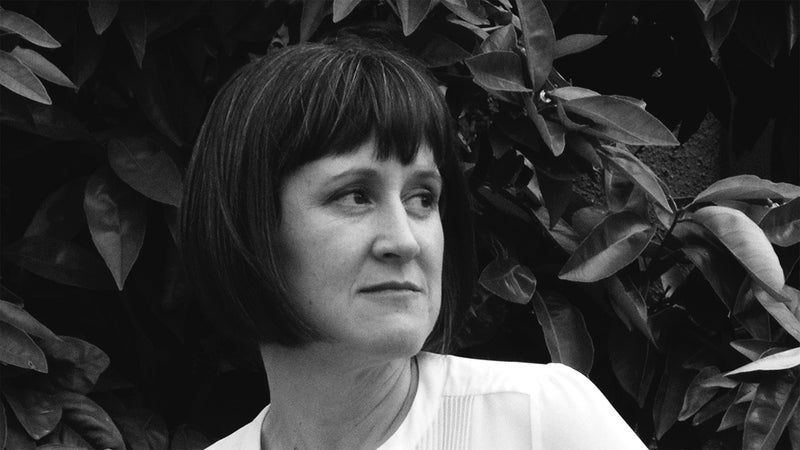Marin Sardy’s younger brother once asked, in all earnestness, if she remembered the time she tried to murder him.��
She was taken aback—she had never done that.��
Sardy’s first book, the memoir�� ($25.95, Pantheon), details the complicated experience of living with both a brother and mother who suffered from��severe mental illness, neither of whom agreed to substantial treatment or even acknowledged their situations. With lyrical descriptions and a creative, nonlinear structure that mimics the erratic nature of schizophrenia—the book’s form shifts from��prose to disembodied lists—Sardy traces the course that mental illness has cut through her family.

Sardy’s is a multiplex clan, one in which a condition appears in successive generations. In such instances, severity often increases as it’s passed down. This was the case with her brother, Tom—a skilled skier and climber who abandoned those pursuits when schizophrenia grabbed hold during his mid twenties—and their mother, Mari, who broke down in her forties and spent the rest of her life roving from the family’s hometown of Anchorage, to California, New Mexico, and beyond. While Mari was functional with the support of Marin and others, Tom refused offers of help from family and friends and spent years homeless in Alaska before eventually dying by��suicide in 2014.
How does one try to lead any semblance of a normal life under such circumstances? Sardy provides no concrete answers to this question except her own example. She hasn’t experienced schizophrenia firsthand but recognizes the ways it has��informed her life. The first chapter, “Strange Things I Have Encountered,” is a series of disjointed vignettes: the sun red through a dense cloud of smoke, a crumpled bullet on the floor. Upon first read, the strange episodes seem confusing and incongruous. Later��they become prescient. “When a sharp object presses into you but doesn’t cut you,” Sardy writes, “and your skin bulges around it and forms a crease at the point of contact.” This turn of phrase reflects the book’s exploration of how mental illness reverberates through the affected person’s entire community, everyone growing awkwardly around it.
The author, also an essayist (some chapters, like “A Shapeless Thief” and “Chokecherries,” were published elsewhere before being incorporated into the memoir) describes childhood with a severely paranoid mother in surprisingly matter-of-fact��terms. Mari’s delusions became obvious when Marin was just ten��years old. “She took my sisters and brother and me to hotels when she thought they were watching us,” Sardy writes. “We slept there on school nights, displaced, broken from our routine as she remade our world.” After the parents divorced, the children’s father moved in next door so the kids would be close by. The four siblings continued to live with their mother on and off.

A chapter is dedicated to anonymous family members’ interviews with Sardy, explaining in turns that they didn’t understand what was happening to Mari, that they hoped it might go away, that it was too shameful to address head-on. Even in the 1980s, schizophrenia was not well understood, and to this day��the syndrome’s causes and symptoms are not entirely clear.��Despite her tumultuous upbringing, Sardy matured into a well-adjusted adult with a more nuanced understanding of how her mother saw the world.��
The author’s life isn’t terribly dissimilar from her mother’s. An itinerant worker in her young-adult years, Sardy worked summers in Alaska banding birds for Fish and Wildlife and spent winters chasing powder and exploring Asia and Latin America. She takes readers along on some of her travels—Costa Rica with Tom, just before the onset of his mental illness; Morocco with her sister Adrienne. She also reaches back through several generations of mental illness. Her grandmother Barbara’s brother was institutionalized, and her great-grandmother Julia appears to have experienced hallucinations of Japanese spies in the walls of her home during World War II. Sardy connects the dots between her own traits and those of her forebears: the sensitivity, the moodiness, how��“in spite of myself, my life turned on absurdities and paradoxes.” She touches—too briefly—on her own struggle with depression. As in any family, examining one’s relatives is a useful lens for understanding oneself.
An essayist and cultural critic,��Sardy also uses pop culture to look inward. One chapter recalls a phase in her early twenties when she took to wearing flamboyantly colorful clothing, accessories, and makeup while living in Bozeman, Montana. She likened herself to David Bowie and his famous Aladdin Sane persona, who wore a lightning bolt across his face to symbolize the dual-mindedness exhibited by schizophrenics like his brother Terry. Sardy wasn’t aware of this connection, but in retrospect, she writes, “I think I was trying to do what Bowie had done, to find a way to continue on in the presence of schizophrenia.”��Ostentatious articles��of clothing like��a thrifted lavender and navy mesh shirt emblazoned with the word ASYLUM made Sardy stand out��from the crowd in the mountain town.��“This was where I first understood that you could find asylum in exposure.”
By opening up and writing frankly about her experiences, Sardy does more than indulge readers’ morbid fascination. She writes to help herself make sense of traumatic events, but in doing so she forces readers to consider mental illness more familiarly: What if your brother, or your mother, was psychotic? Odds are, you’d think differently about how our society addresses—or fails to address—mental health. In the book, Sardy remembers a shockingly tactless column in the Anchorage Daily News about Tom, who was by that point a well-known fixture around town, infamous for peeping on a local woman (though his motives, at least to those who knew him, were ostensibly benign). To the columnist, Tom is merely some crazy guy in the park who might be dangerous. To Sardy, he’s her brother. It’s a messy reality to tangle with.


